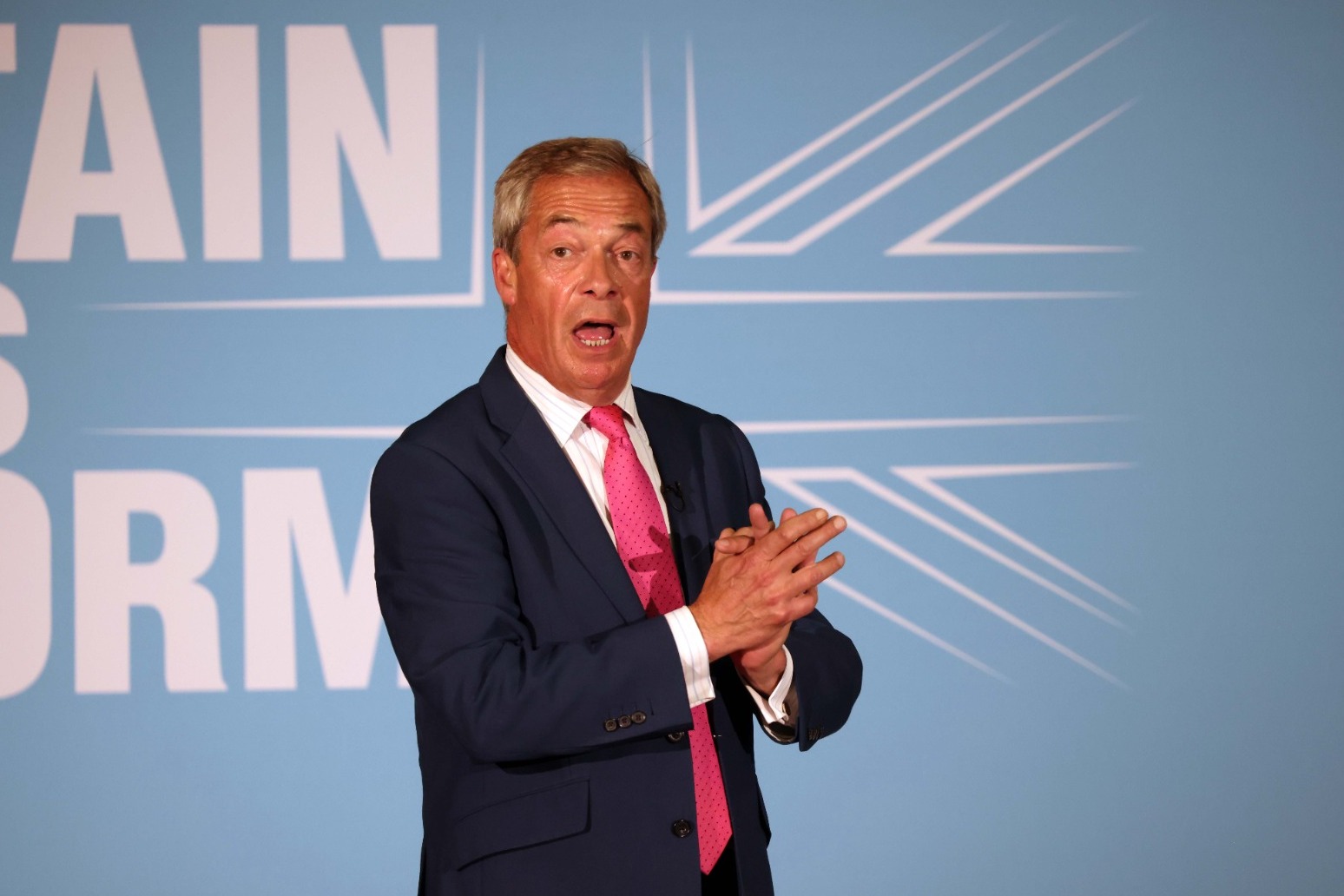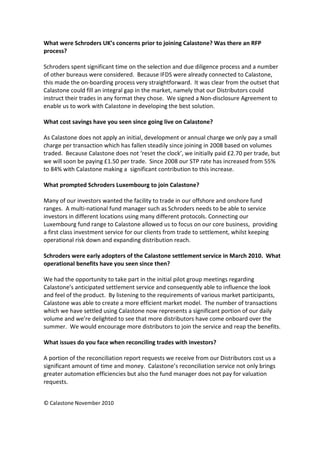The Ongoing Row Within Reform UK: An Analysis

Table of Contents
The Leadership Struggle: Tice vs. Farage
The central axis of the Reform UK internal conflict is the ongoing power struggle between Richard Tice, the party's leader, and Nigel Farage, its influential figurehead. This internal friction significantly impacts the party's cohesion and its ability to project a unified front.
Richard Tice's Ascent and Subsequent Challenges
Richard Tice's leadership has been marked by attempts to consolidate power and forge a distinct identity for Reform UK separate from Farage's shadow. However, this has proven challenging.
- Policy Disagreements: While both share a Eurosceptic stance, subtle but significant policy differences have emerged, particularly regarding the party's approach to domestic issues. Differing views on economic policy and social issues have caused friction within the party.
- Public Disagreements: Instances of public disagreements between Tice and Farage, or between Tice and prominent Farage supporters, have undermined party unity and damaged public perception. These disagreements have often played out on social media and in interviews, further exacerbating the divisions.
- Factional Divisions: Tice has struggled to unite the diverse factions within Reform UK, some loyal to Farage, others aligned with Tice's more explicitly business-focused vision. This lack of cohesion translates into difficulties in implementing a coherent party strategy.
Nigel Farage's Continued Influence and Dissenting Voices
Despite not holding a formal leadership position, Nigel Farage retains considerable influence within Reform UK. His continued presence and pronouncements shape the party's narrative and contribute to internal tensions.
- Public Statements: Farage's public statements, often critical of Tice's leadership or the party's direction, consistently fuel speculation about internal divisions and undermine the party's message.
- Influence on Party Members: Many party members remain fiercely loyal to Farage, creating a significant power base resistant to Tice's authority and often undermining attempts at internal party discipline.
- Internal Resistance: Tice's decisions are frequently met with resistance from factions aligned with Farage, hindering the implementation of his policy agenda and creating instability within the party.
Ideological Divisions within Reform UK
Beyond the leadership struggle, significant ideological divisions exist within Reform UK, threatening to fracture the party further.
The Spectrum of Conservatism
Reform UK encompasses a broad spectrum of conservative thought, ranging from traditional conservatives to more populist and Eurosceptic elements. This ideological diversity fuels internal conflict.
- Policy Divergence: This divergence is apparent in policy positions on issues such as social welfare, environmental policy, and the role of the state. Debates over these issues frequently become public, highlighting the internal rifts.
- Key Figures: Several prominent figures within Reform UK represent these distinct ideological positions, further emphasizing the internal divisions and making it harder to present a coherent political message.
Balancing Brexit and Domestic Policy
A crucial source of internal debate within Reform UK concerns the party's strategic focus: should it primarily concentrate on Brexit-related issues or broaden its appeal by addressing domestic policy concerns?
- Differing Priorities: Some factions prioritize continuing the fight for a 'cleaner' Brexit, while others argue for focusing on issues like the cost of living crisis and the NHS. This internal disagreement makes it difficult for the party to develop a comprehensive and consistent political platform.
- Public Opinion: Understanding public opinion on these priorities is crucial. If the party’s internal focus is not aligned with the electorate’s concerns, it risks losing valuable support.
Membership and Grassroots Activism
The level of engagement and activism within Reform UK's membership base plays a significant role in shaping the internal conflict.
- Member Involvement: The extent to which party members actively participate in internal debates and policy discussions influences the party's ability to resolve its internal conflicts. A lack of engagement can exacerbate divisions.
- Membership Numbers and Trends: Analyzing membership numbers and trends can reveal the extent of support for each faction and the overall health of the party. A decline in membership may indicate growing dissatisfaction and internal fracturing.
The Impact on Reform UK's Electoral Prospects
The ongoing Reform UK internal conflict has severe consequences for the party's electoral prospects.
Damage to the Party's Image
The constant infighting significantly damages Reform UK's public image. The perception of internal disarray makes it hard for the party to attract voters and win public trust.
- Negative Media Coverage: The internal disputes regularly generate negative media coverage, further harming the party's image and making it less appealing to potential supporters.
- Decreased Public Support: Polling data consistently indicates a decrease in public support for Reform UK, directly linked to the ongoing internal struggles.
Challenges in Attracting and Retaining Members and Voters
The internal divisions within Reform UK create significant difficulties in attracting and retaining both members and voters.
- Membership Decline: The party struggles to maintain membership numbers due to the ongoing uncertainty and lack of a clear and united front.
- Candidate Recruitment: The internal conflict also makes it difficult to recruit high-profile candidates, further weakening the party's electoral prospects.
Conclusion
The ongoing Reform UK internal conflict presents significant challenges for the party's future. The leadership struggle, ideological divisions, and the resulting damage to its public image severely threaten its electoral viability. Unless Reform UK can resolve these internal divisions and present a united and cohesive front, its ability to effectively challenge the established political order will remain significantly hampered. Continued monitoring of the Reform UK internal conflict is crucial to understanding its trajectory and impact on the UK's political landscape. Only through addressing the core issues contributing to the Reform UK internal conflict can the party hope to regain its footing and effectively compete in the UK political arena.

Featured Posts
-
 Schroders First Quarter Losses Clients Exit Equity Markets
May 03, 2025
Schroders First Quarter Losses Clients Exit Equity Markets
May 03, 2025 -
 Slah Fy Khtr Jw 24 Ynshr Thdhyra Bshan Mghamrath Alkhtyrt
May 03, 2025
Slah Fy Khtr Jw 24 Ynshr Thdhyra Bshan Mghamrath Alkhtyrt
May 03, 2025 -
 Mohamed Salah Contract Liverpools Plan And Potential Risks
May 03, 2025
Mohamed Salah Contract Liverpools Plan And Potential Risks
May 03, 2025 -
 Millions Stolen Inside The Office365 Executive Email Hack
May 03, 2025
Millions Stolen Inside The Office365 Executive Email Hack
May 03, 2025 -
 Fortnite Servers Offline Planned Maintenance For Update 34 40
May 03, 2025
Fortnite Servers Offline Planned Maintenance For Update 34 40
May 03, 2025
